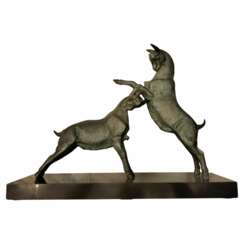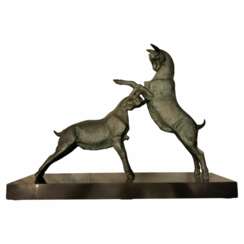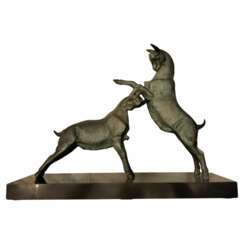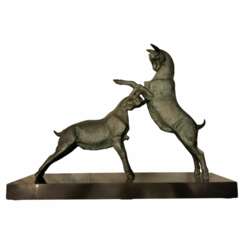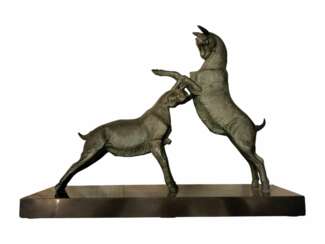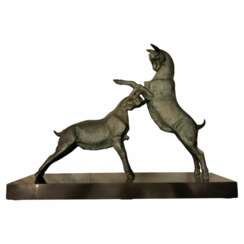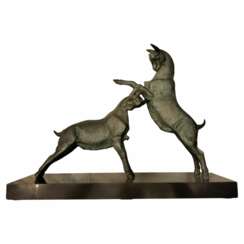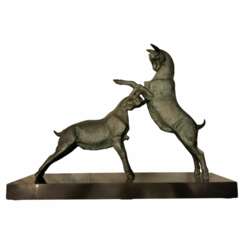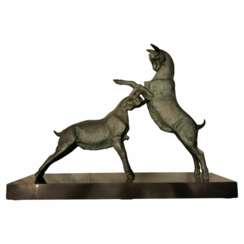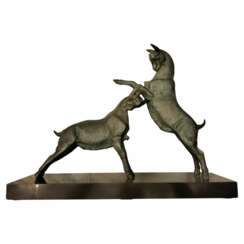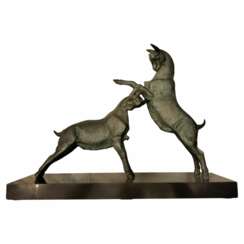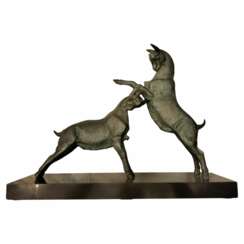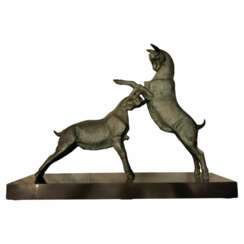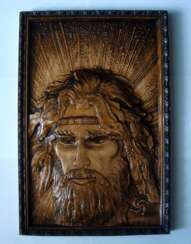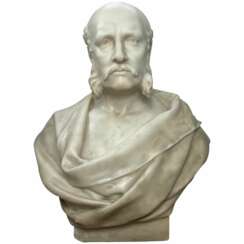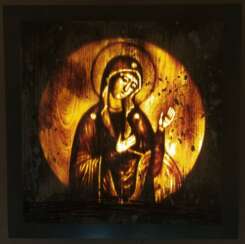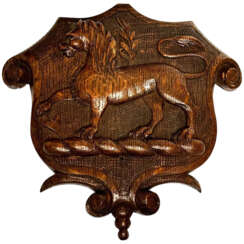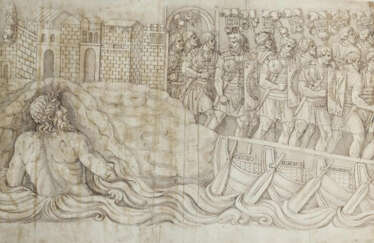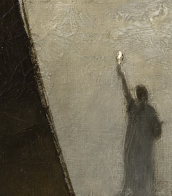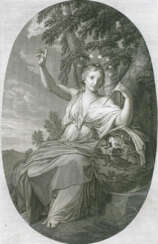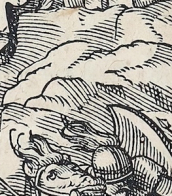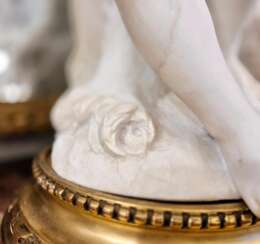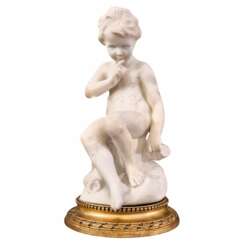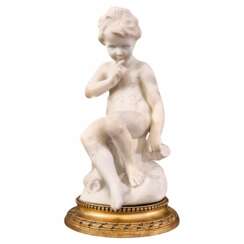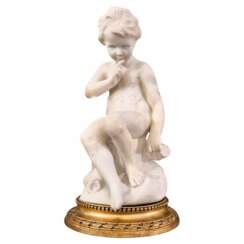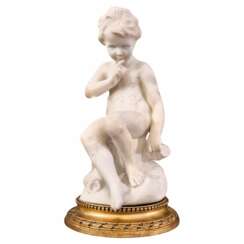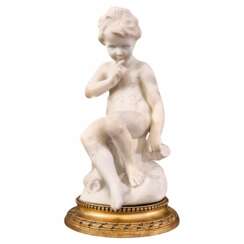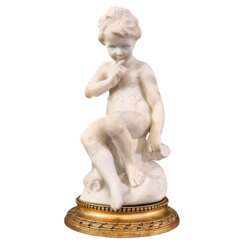97 Items by auctions and galleries:
sculptures - (other)
Древнеславянский бог Род | Ancient Slavic god Rod
Sergey Anikin (b. 1967) 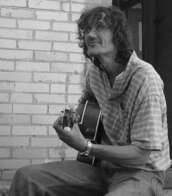 Shop Anikin Sergey
Shop Anikin Sergey

Sergey Anikin
04.02.1967
Ukraine
Занимаюсь созданием арт-объектов из дерева и металла, резных картин христианской и дохристианской тематики. Пишу картины маслом. Большой опыт работы в видеопроизводстве, графическом и 3D дизайне, скульптуре, в том числе создании интерьеров и экстерьеров, при работе с ювелирными изделиями.
I am engaged in the creation of art objects in wood and metal, carved pictures of Christian and pre-Christian themes. I paint oil paintings.
Extensive experience in video production, in graphic and 3d design, sculpting, including the creation of interiors and exteriors, when working with jewelry.

Artist shop
Anikin Sergey
Ukraine
Number of products: 7
Бурлюк и птица Хо
Igor Komornyy (b. 1962) 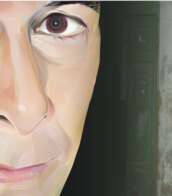 Shop Komornyy Igor
Shop Komornyy Igor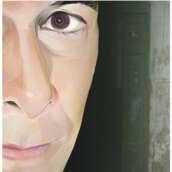

Igor Komornyy
22.11.1962
Russia
Я родился в 1962 году в морском порту Владивосток, который находится на берегу Тихого океана и окружен Японским морем со всех сторон.
В 1980 году окончил среднюю школу. Посетил художественную студию. В 1981 году поступил во Владивостокское художественное училище.. После службы в морской авиации с 1984 по 1989 год продолжил обучение в художественном училище.
В 2001 год начал самостоятельно изучать различные графические программы Corel DRAW / 3 ds MAX / Photoshop и другие.
Работал дизайнером. С 1994 по 1998 год директор компании «Кром-дизайн».
В 2001 открыл частную рекламную компанию до 2008 года, занимался рекламой.
Последние несколько лет я занимаюсь только изобразительным искусством. Живопись / графика.
Выставки:
В 1994 году участвовал в «Региональной молодежной выставке».
В 2001 году штат Северная Каролина выставил работы в США в Гринсборо в Veiw на галереях Elm. Две работы из серии Megacity были приобретены частным коллектором.
2015 год участвовал в Региональной выставке 155 лет во Владивостоке. Работа «Деньги» приводится в каталоге выставки.
2015 год участвовал в рождественской городской выставке в Приморском каравайском фонде союза художников. Работы приводятся в каталоге.
В 2016 году участие в выставке 156 лет во Владивостоке. В каталоге приводится работа «Бурлюк и птица Хуо».
В 2016 участвовал в «Осенней региональной выставке».
В 2016 году участие в Фестивале изобразительных искусств «Мир за зеркалом». В Дальневосточном федеральном университете на острове «Русский».
В 2016 году участие в региональной выставке «Искусство графики» в Приморском региональном офисе «Союз художников России». В каталоге приводится работа «Капитализация пространства».
Я загружаю работы в различные федеральные интернет-сайты.
С конца 2016 года начал отправлять работы в Интернете для участия в различных международных выставках и конкурсах

Artist shop
Komornyy Igor
Russia
Number of products: 8
Manifested
Rustam Nazirov (b. 1975)  Shop Nazirov Rustam
Shop Nazirov Rustam

Rustam Nazirov
17.05.1975
Russia
Рустам Назиров родился в 1975 году, в Ульяновской обл. Среднее Поволжье. В 7 лет, вместе семьей переезжаю за Полярный круг, в суровый город, Крайнего Севера, Норильск. Монохромность окружающего пространства воспитало тягу к познанию мира через форму и фактуры, заложив выбор пути скульптора и графика. Начиная с поступления в художественную школу в 1987г., я всегда знал что буду Художником. В 1991 окончив художественную школу, поступаю в Художественное училище города Норильска, Северное отделение. Образованное под патронажем ЮНЕСКО- " Для сохранения самобытного искусства народов крайнего севера.." Приобщение к уникальной культуре Сурового края произошло на базе резьбы по дереву и кости. Окончив училище, скульптором, резчиком по дереву, в 1995 году, поступаю В Поволжский Технологический Институт г. Тольятти. В 2000г получаю высшее образование по специальности Дизайнер. С 2000г Живу и творю в г. Москве.

Artist shop
Nazirov Rustam
Russia
Number of products: 3



